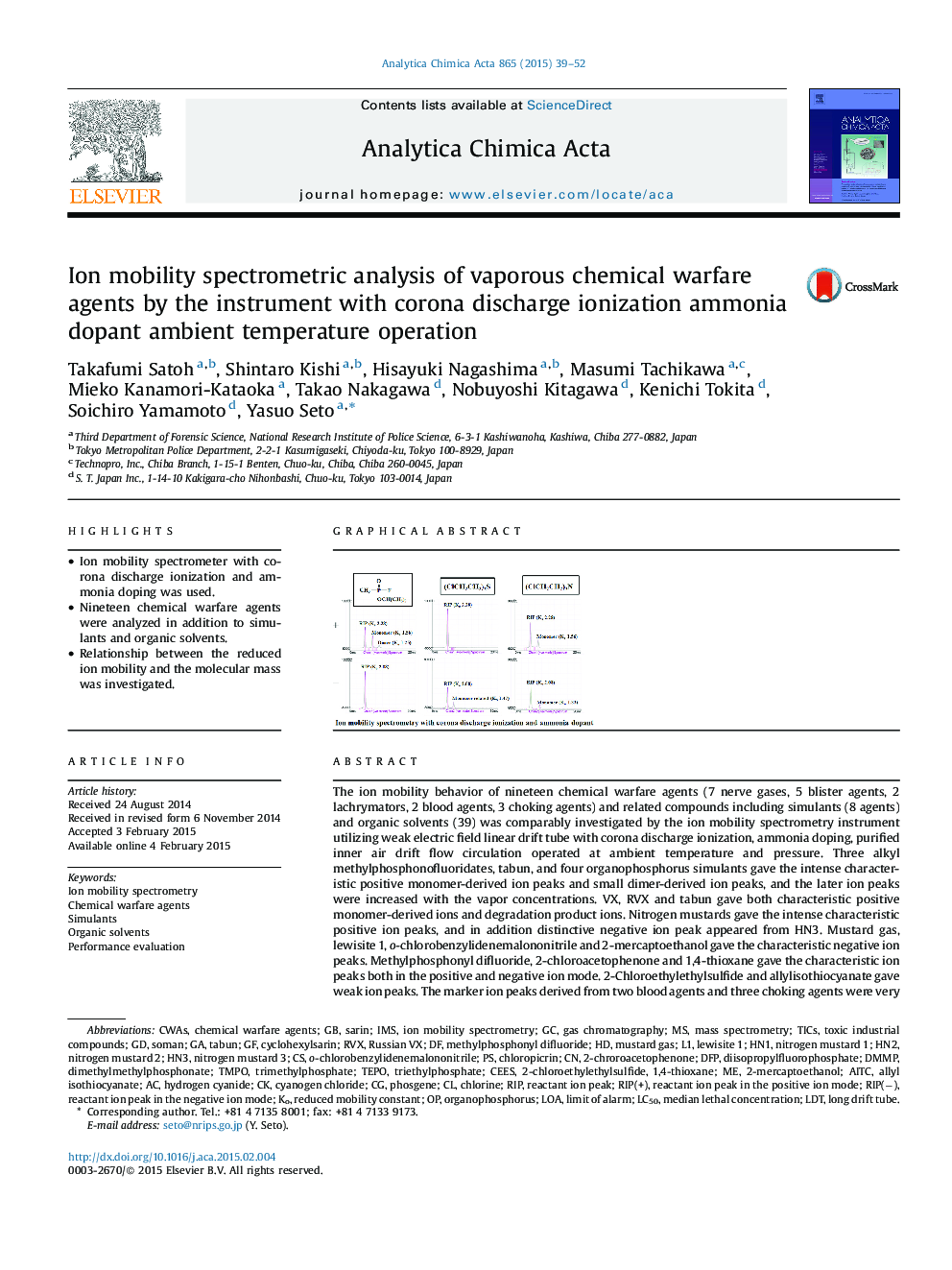| کد مقاله | کد نشریه | سال انتشار | مقاله انگلیسی | نسخه تمام متن |
|---|---|---|---|---|
| 1164024 | 1490967 | 2015 | 14 صفحه PDF | دانلود رایگان |
• Ion mobility spectrometer with corona discharge ionization and ammonia doping was used.
• Nineteen chemical warfare agents were analyzed in addition to simulants and organic solvents.
• Relationship between the reduced ion mobility and the molecular mass was investigated.
The ion mobility behavior of nineteen chemical warfare agents (7 nerve gases, 5 blister agents, 2 lachrymators, 2 blood agents, 3 choking agents) and related compounds including simulants (8 agents) and organic solvents (39) was comparably investigated by the ion mobility spectrometry instrument utilizing weak electric field linear drift tube with corona discharge ionization, ammonia doping, purified inner air drift flow circulation operated at ambient temperature and pressure. Three alkyl methylphosphonofluoridates, tabun, and four organophosphorus simulants gave the intense characteristic positive monomer-derived ion peaks and small dimer-derived ion peaks, and the later ion peaks were increased with the vapor concentrations. VX, RVX and tabun gave both characteristic positive monomer-derived ions and degradation product ions. Nitrogen mustards gave the intense characteristic positive ion peaks, and in addition distinctive negative ion peak appeared from HN3. Mustard gas, lewisite 1, o-chlorobenzylidenemalononitrile and 2-mercaptoethanol gave the characteristic negative ion peaks. Methylphosphonyl difluoride, 2-chloroacetophenone and 1,4-thioxane gave the characteristic ion peaks both in the positive and negative ion mode. 2-Chloroethylethylsulfide and allylisothiocyanate gave weak ion peaks. The marker ion peaks derived from two blood agents and three choking agents were very close to the reactant ion peak in negative ion mode and the respective reduced ion mobility was fluctuated. The reduced ion mobility of the CWA monomer-derived peaks were positively correlated with molecular masses among structurally similar agents such as G-type nerve gases and organophosphorus simulants; V-type nerve gases and nitrogen mustards. The slope values of the calibration plots of the peak heights of the characteristic marker ions versus the vapor concentrations are related to the detection sensitivity, and within chemical warfare agents examined the slope values for sarin, soman, tabun and nitrogen mustards were higher. Some CWA simulants and organic solvents gave the ion peaks eluting at the similar positions of the CWAs, resulting in false positive alarms.
Figure optionsDownload as PowerPoint slide
Journal: Analytica Chimica Acta - Volume 865, 20 March 2015, Pages 39–52
